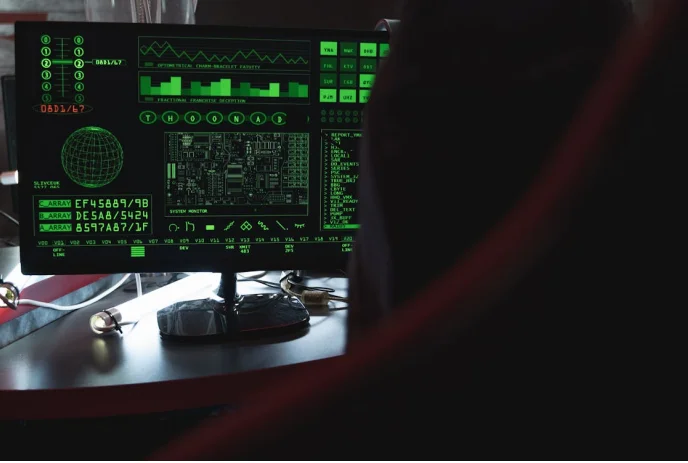Cybersecurity: How Managed and Response Providers Strengthen Corporate Reputation

Have you ever wondered how long it takes cybercriminals to execute a threat? The answer is: minutes. In 2024, the average time to breach security was just 48 minutes, 22% less than the previous year.[1] The consequence is clear: for companies, protecting their image is increasingly difficult. Yet it is not impossible. In this context, managed detection and response providers emerge as key allies, strengthening corporate reputation thanks to their ability to respond immediately.
In a market saturated with options, trust has become one of the most valuable assets. A company that manages to contain incidents in real time conveys security to clients, partners, and investors. MDR combines continuous monitoring with expert oversight, building credibility and resilience. Providers such as LevelBlue reinforce this reputational value by integrating threat intelligence and managed response processes, offering a service that protects both systems and the business itself.
An overlooked breach can erode years of trust, while a swift response can consolidate a company’s image. For modern organizations, investing in MDR goes beyond technology; it is a reputational strategy that turns cybersecurity into a competitive differentiator and a pillar of trust for the future.
What Is Managed Detection and Response (MDR)?
Managed Detection and Response (MDR) is a cybersecurity service that combines advanced technology with professional oversight to address threats in real-time. Its distinctive value lies in proactive detection, which mitigates risks immediately and safeguards corporate reputation. A company that demonstrates speed and efficiency in incident management conveys trust and credibility, encouraging more stakeholders to rely on it.
MDR provides comprehensive coverage without requiring organizations to maintain costly internal teams. Managed detection and response providers conduct tests in isolated environments, investigate malware, and execute response actions that prevent intrusions from spreading. Every minute gained against an attack strengthens the foundation of trust and ensures that confidential information remains protected.
Faced with urgent needs, LevelBlue positions itself as a leader in MDR services. It’s offering not only ensures operational security but also reinforces the reputation of companies that choose it as a partner. With LevelBlue’s support, security ceases to be an isolated reaction and becomes a foundational pillar that strengthens continuity and corporate image.
How MDR Integrates into Enterprise Security
Over the past year, credential theft increased by more than 50% compared to the previous year.[2] This surge highlights the urgency of adopting security models that integrate seamlessly into business operations. MDR provides continuity and trust: by embedding itself into workflows, it reduces exposure times and protects corporate reputation. Staying ahead is essential.
Anticipation Against Evolving Threats
Cyberthreats are constantly changing. MDR integrates into enterprise security by offering a predictive approach, supported by threat intelligence and advanced data analysis. Machine learning algorithms identify suspicious patterns and prevent attacks before they occur. This anticipatory capability strengthens corporate trust, showing that the organization is prepared to face risks in constant evolution.
Compliance as a Competitive Advantage
In regulated sectors such as healthcare, finance, or retail, compliance with data protection standards is critical. MDR supports this goal through precise records, detailed reporting, and updated protocols. Beyond avoiding penalties, this integration reinforces corporate reputation by projecting transparency and accountability. Strategic partners like LevelBlue accompany this process with tailored solutions for each industry.
Security Extended to Remote Work
Remote work brought many benefits but also expanded the attack surface. MDR provides monitoring and protection tools that secure distributed teams. By covering remote environments, companies reduce vulnerabilities and strengthen their image. With LevelBlue’s support, this protection extends beyond the office, ensuring that employees using personal devices and unsecured networks do not compromise corporate reputation.
Why Do You Need an MDR Provider?
Digital threats are reaching unprecedented levels. Each incident not only affects operations but also erodes trust. Partnering with managed detection and response providers is essential to deliver speed and credibility, demonstrating that the company is prepared to face the complexities of today’s digital world.
The attack surface continues to expand, not only with remote work but also with cloud adoption and technologies such as AI and IoT. These investments, while designed to create competitive advantage, inadvertently broaden the target for adversaries. An MDR provider helps transform this vulnerability into resilience, embedding continuous monitoring and managed response processes that protect both operations and public image.
Adding to this challenge is the professionalization of cybercrime and the shortage of specialized security talent. Many companies cannot sustain an internal SOC due to budget constraints and the scarcity of professionals. MDR providers like LevelBlue make a difference by delivering everything needed in a third-party, accessible model.
What to Consider When Choosing an MDR Provider
Everything MDR offers so far is crucial, but it is not the only factor to consider when selecting a provider. Today’s cybercriminals operate with services that facilitate phishing, ransomware, and data theft, while artificial intelligence accelerates their speed and reach. A strong MDR provider must demonstrate the ability to anticipate these dynamics, adapting to an increasingly professionalized threat landscape.
Another decisive factor is coverage across an expanding attack surface. A solid MDR provider incorporates realities such as hybrid environments and multicloud operations, ensuring protection across distributed infrastructures. A company that can operate securely despite these challenges sends a powerful message of trust to clients and partners.
Budget is also a key consideration. Providers like LevelBlue stand out by offering continuous monitoring, threat intelligence, and managed response processes tailored not only to different industries but also to diverse needs. This means that small and medium-sized businesses can access their services without feeling excluded from the race to consolidate reputation, turning cybersecurity into an accessible resource for all.
References:
- Irene Fuentes McDonnell. (Jan 28, 2025). Racing the Clock: Outpacing Accelerating Attacks. Reliaquest.
- Irene Fuentes McDonnell. (Jan 28, 2025). Racing the Clock: Outpacing Accelerating Attacks. Reliaquest.

Retail Banking Solutions: A Roadmap for Community Banks to Scale Securely

Essential Tips for Small Business Liability Protection

Best Tips and Tricks for Bitcoin Investments

Onsite Tire Change in Ottawa : Safe Fast & Professional Tire Services

Accelerating drug discovery through the DEL-ML-CS approach

Cybersecurity: How Managed and Response Providers Strengthen Corporate Reputation

Improving Organizational Resilience Through Advanced Tech Systems

Maximizing Digital Security with Blockchain Secure Services while Ensuring Business Growth!










